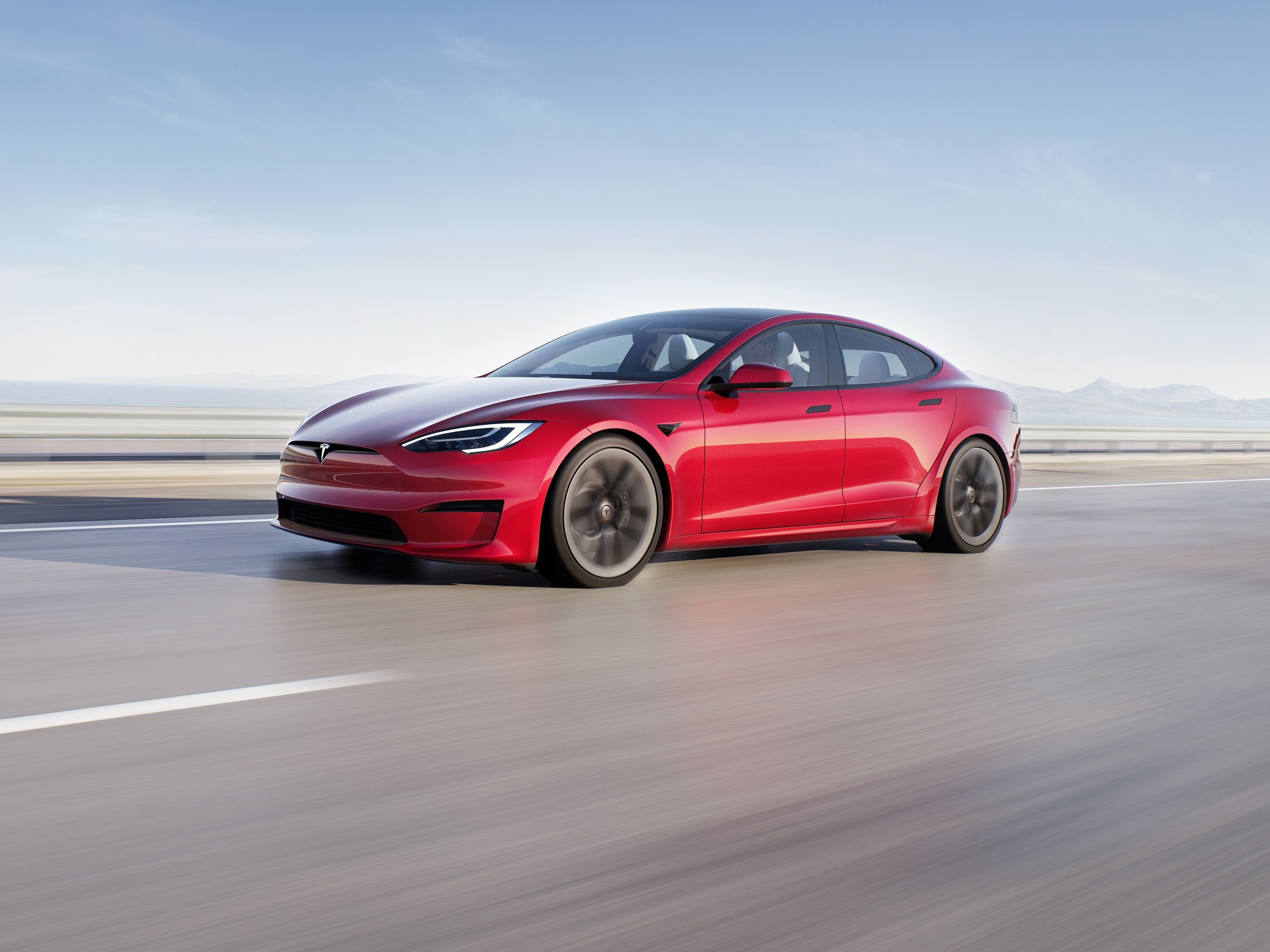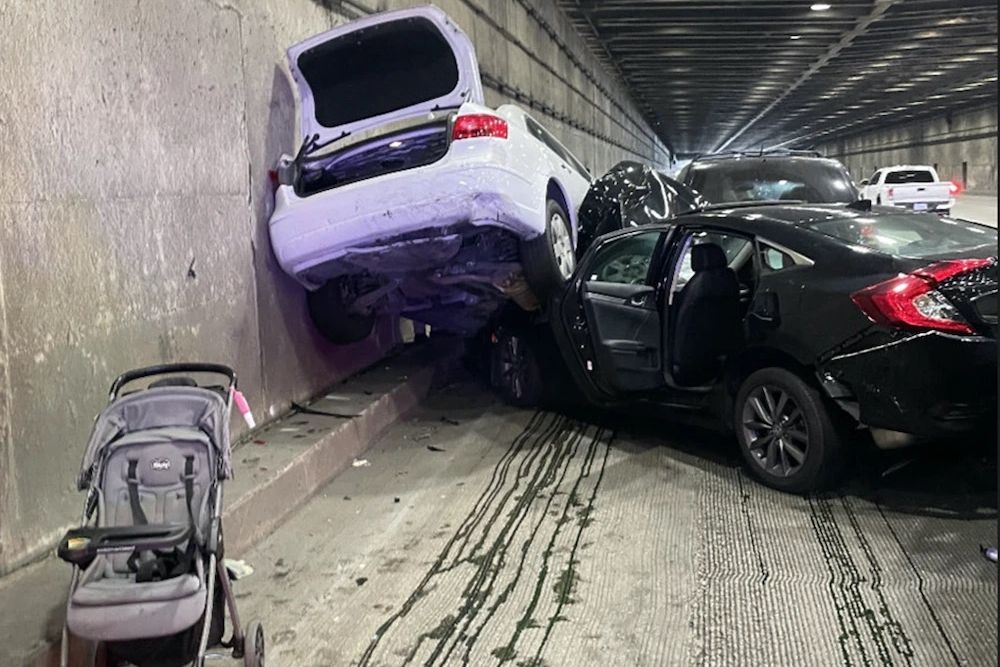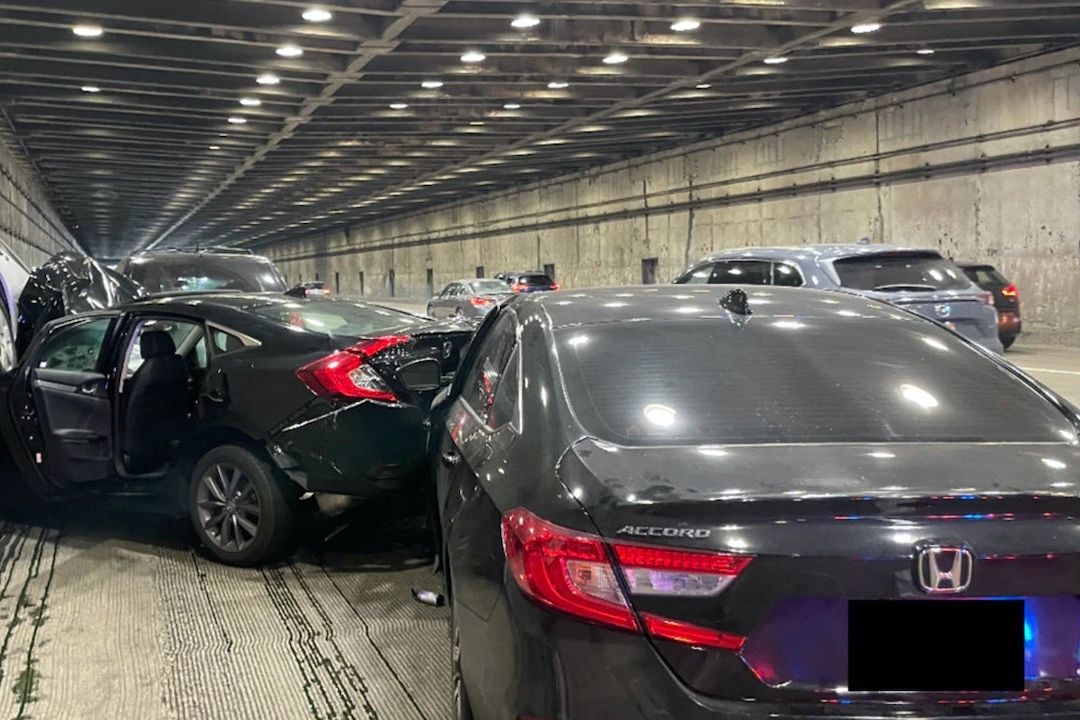
Following an eight-car pileup on San Fransisco's Bay Bridge on Thanksgiving, highway surveillance footage has surfaced of the Tesla moving into the outside lane and abruptly slowing to a stop, leading to the pileup that injured nine people. The driver claims that their Tesla Model S "braked unexpectedly" while Tesla's new Full Self-Driving (FSD Beta) feature was engaged. Of the nine people injured in the crash was a two-year-old child that suffered an abrasion to the back of their head.
The video does not prove that FSD was in control of the car, but the footage, via Twitter, clearly shows the Model S indicating, moving into the outside lane and braking to a complete stop as reported. Even by California standards, that's random behavior on the road.
Of course, there is blame to share in the pileup, as the seven cars behind the initial contact should have left a safe distance to stop between the car in front in relation to the speed being traveled. However, the Model S clearly caused the crash with its unpredictable behavior. To our eye from one angle on a single piece of distant footage, the vehicle directly behind didn't have much chance, if any, of avoiding contact.
The crash happened just hours after Tesla CEO Elon Musk congratulated staff for meeting a major Autopilot milestone on Twitter, the social media platform he now owns and runs.
By the end of 2022, the FSD feature had been rolled out to over 285,000 vehicles, making it easy to understand why the National Highway Traffic Safety Administration (NHTSA) is concerned and launched a full investigation. On top of this incident, over 100 complaints of "surge" or "phantom" braking by Tesla vehicles have been lodged with the government safety agency.
"The resources require a lot of technical expertise, actually some legal novelty and so we're moving as quickly as we can, but we also want to be careful and make sure we have all the information we need," Ann Carlson, the acting head of the agency, told Reuters.


